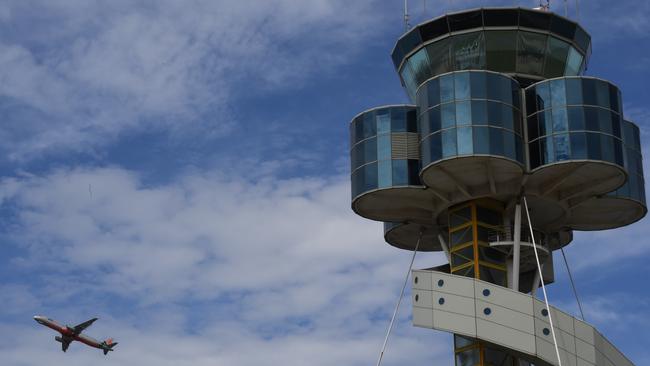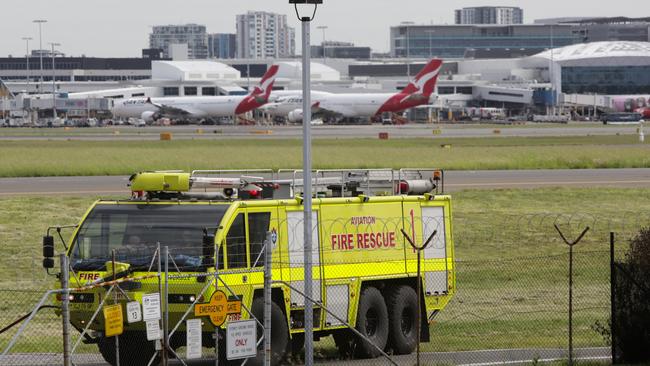‘Unacceptable’: Sydney air control unit left without a manager 70 times, as Melbourne-based controllers ‘left in tears’
Australia’s busiest airport is frequently operating without a manager in charge of air traffic control for arriving aircraft, due to staffing problems, leaked safety reports reveal.

Australia’s busiest airport is frequently operating without a manager in charge of air traffic control for arriving aircraft, due to staffing problems, leaked reports reveal.
Airservices Australia “safety related” reports show at least 70 instances from late July to late November last year of the unit controlling aircraft approaching Sydney Airport being left without a rostered manager.
The documents, obtained by The Australian, show the Sydney Terminal Control Unit for approaches being without a manager for periods ranging from hours to up to eight consecutive shifts.
Sources said the ongoing practice was linked to a shortage of experienced controllers after Airservices granted early retirement to 120 in the 12 months to June last year.
“It is concerning that the busiest airport in Australia operates without a traffic manager so often,” a controller said.
The traffic managers are essentially shift managers, consulting with other areas to organise runway selection, traffic flow and “metering” – restricting or increasing the number of arrivals to ensure safe processing of air traffic.
They are particularly relied on for air traffic outside the norm, such as helicopters and scenic flights that add complexity to control operations. They also handle emergency co-ordination and staff rotation to ensure controllers are not overloaded.
In the absence of a Sydney manager, it is understood the role goes to a supervisor in Melbourne air traffic control, but controllers said this was inappropriate.
“The person who then takes control of it is based in Melbourne and does not have the intimate knowledge of Sydney necessary to meter traffic appropriately,” a controller said.
“The traffic manager is usually a senior controller with a wealth of experience. Their workload can‘t easily be shared with controllers on console as it will distract from the primary task at hand.”
Safety reports repeatedly state “no Sydney traffic manager available”, “no Sydney traffic manager rostered”, “Sydney traffic manager position not staffed”.
One report expressed concern that the approach unit was operating not only without a manager, but also without a contingency response manager or revised risk assessment. Another states “no direct supervision was provided to the SYD TCU (Sydney Terminal Control Unit) as required”.
The Weekend Australian revealed some of Australia’s busiest regional airspace was left uncontrolled – forcing pilots to “self-separate” – at least 340 times since June, often due to shortages of available, adequately trained controllers.
The Australian has since obtained a safety incident report from December 23, detailing how two controllers, based in Melbourne, were “plugged in” to their consoles for up to six hours, with only one 15-minute break.
Sources said controllers were usually given longer breaks closer to every two hours, to ensure they retained the mental alertness vital for safe performance of their high-stakes work. The safety report said one controller “broke down in tears and was escorted from the ops room” after finally being “unplugged”; the other “was observed to be physically shaking”.

It states the two controllers, and a third who worked 2½ hours with no break, had to contend with a “high workload and complexity” across the airspace they were controlling. This included thunderstorm-related deviations and pre-Christmas traffic.
An Airservices spokeswoman said safety was “never compromised” and there was no threat to the travelling public. “Airservices has experienced unplanned leave rates that are 44 per cent higher than normal primarily due to flu and Covid-19 infections,” she said.
“As you have reported, Airservices Australia requires about 800 air traffic controllers to fully staff its operations and employs more than 900 air traffic controllers – so there is no shortage. Claims that the retirement scheme … has created a shortage do not hold water.”
Contingency arrangements had “operated for decades in Australia without incident”.
“Air traffic control duty time is governed by a stringent fatigue management system and an enterprise agreement that ensures air traffic controllers are always fit for duty,” she said. However, controllers say there are inadequate numbers of controllers with the relevant ratings or experience to work the various types of airspace, and a shortage of trainers.




To join the conversation, please log in. Don't have an account? Register
Join the conversation, you are commenting as Logout